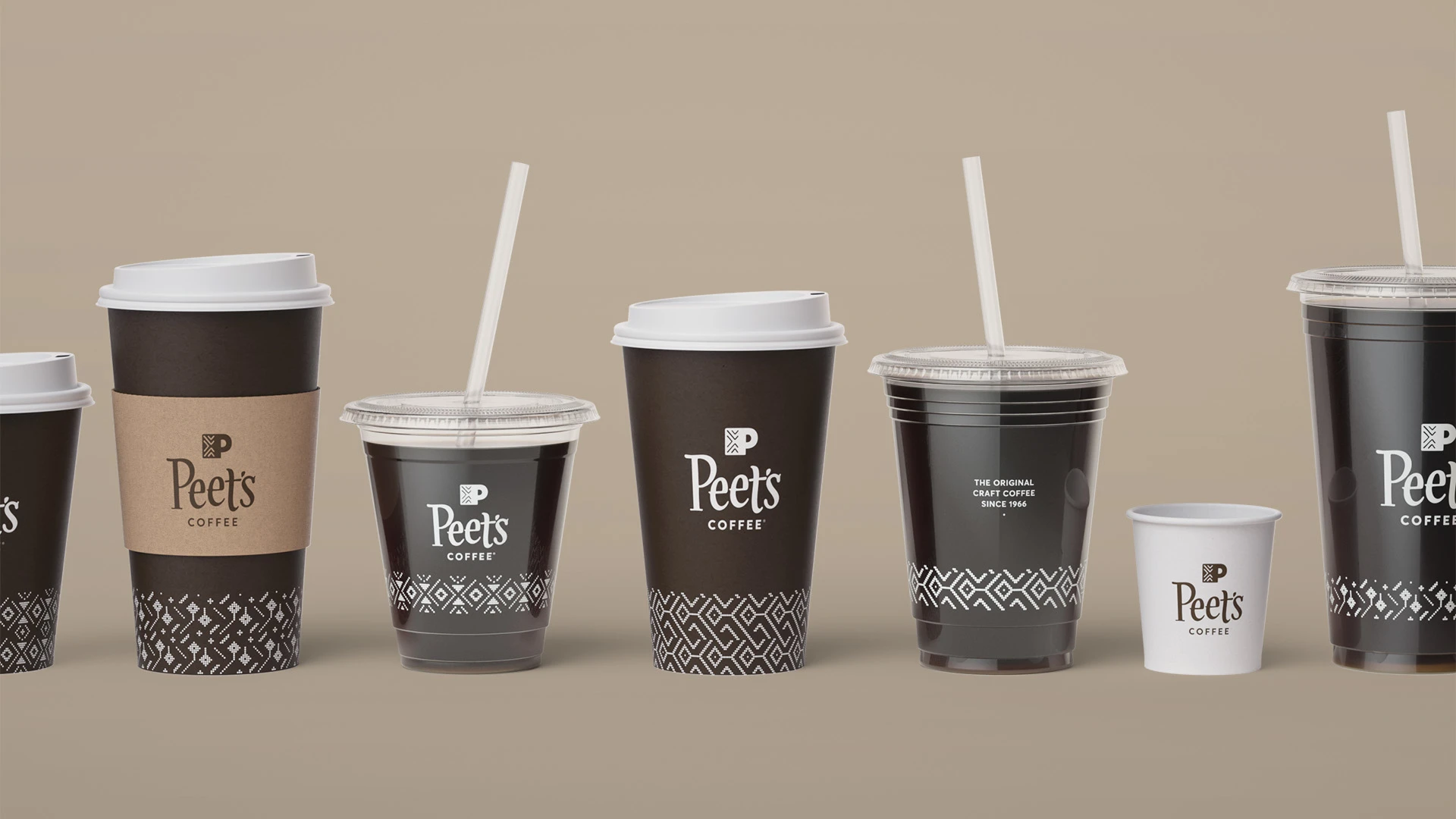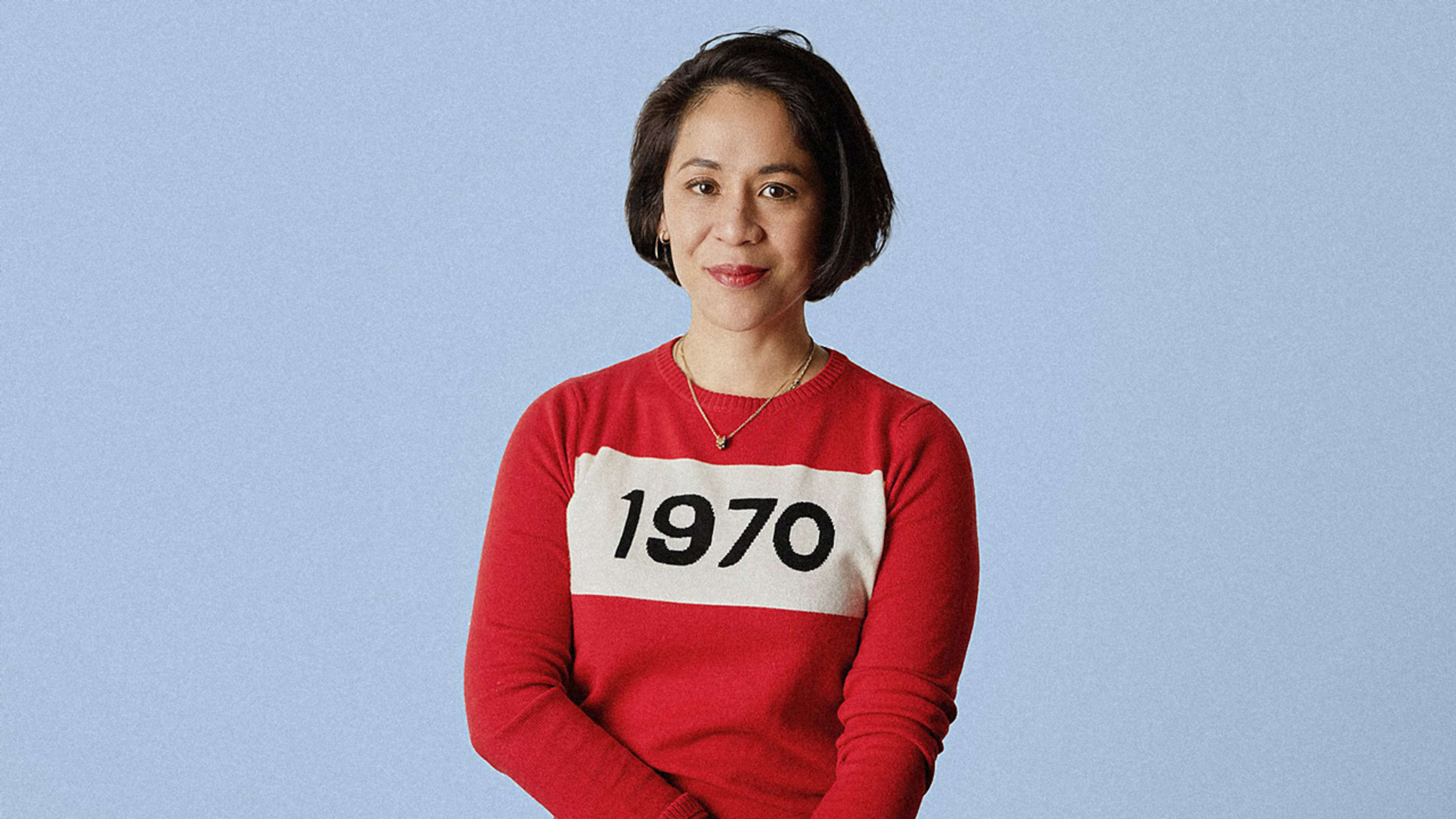Tish Evangelista is a creative director and founder at Character, a branding and design agency that has done work for Levi’s, Peet’s, Pottery Barn, and more. She spoke to Doreen Lorenzo for Designing Women, a series of interviews with brilliant women in the design industry.
Doreen Lorenzo: How did you know you wanted to do design? What was your road?
Tish Evangelista: I’ve always known that I wanted to be in communications—even as a kid I was interested in the arts. I grew up in the Philippines and earned my previous degree in journalism there. For a few years I worked as an on-camera journalist, which wasn’t quite right for me. That’s when I decided to come to the United States, go back to school, and really figure out what I was most interested in. I came to California and went into the design program at California College of Arts and Crafts, or CCAC (now CCA). Even though English isn’t my first language, I feel like I’m a good communicator both visually and in the written word, so graphic design is a nice way to combine the two interests of mine and speak to a wider audience.
DL: Tell us a couple of things or experiences that influenced you. What was your childhood like?
TE: As a child, I took piano, ballet, and art classes. My parents were really encouraging, but both being academics—my father was a lawyer and my mother a psychologist—they always thought that I would go into something that was academic, or as they described, a “real career path.” At the same time, they always recognized the fact that I flourished in environments where it was more personal expression, and I was encouraged to explore different ways of expressing myself.

DL: Tell me about Character. What does the company do?
TE: Character was started back in 1999 by myself, my good friend Rishi Shourie, and my now-husband, Ben Pham. We all met back in art school, and even then we’d talk about starting our own firm one day. At that time, graphic design in San Francisco was very specific because it was mostly biotech and life science companies coming out of the Bay Area. We discovered a void within San Francisco to fulfill a need for lifestyle brands. Even though several established lifestyle brands were based in San Francisco, the tendency was to look to branding agencies that were in L.A. or New York. We were really interested in addressing consumers from a lifestyle perspective. There weren’t very many agencies that focused on that at the time.

DL: Over the past 20 years, how have you seen the design industry change?
TE: Social media has become a driving force in how brands operate. Through social media, brands have a wider audience reach. Consumers have the means to interact with brands on a daily to hourly basis, which was unheard of 20 years ago. Because of this, as designers, we have had to take a more holistic approach to building brands— considering how brands look, how they sound and think, and whether those all work hand in hand. As designers, our role is now to provide a solid platform from which a brand can take form and continue to evolve. Character is a team of visual, verbal, and strategic thinkers, who align to create those necessary platforms for brands.
DL: What design influences do you see happening today and what would you like to see happen in the future?
TE: When a company missteps, the instinct is to rebrand from a superficial level, like changing the color palette so it’s “friendlier” or “more accessible.” Those things don’t really solve the problem. They really just solve superficial elements as opposed to what the real problems are within the company. Realistically, companies should be self-evaluating by looking back at what their original mission was, and then making sure that they’re still on track to deliver on that mission.

DL: What are some of the things that you still do today, and some of the things that perhaps you now do differently?
TE: Character started initially as a graphic design firm, and we worked with a lot of Bay Area companies like Levi’s, Restoration Hardware, and Pottery Barn [that] allowed us to do beautiful work, and that’s how we got our name out there. The way the industry has changed is that now it can’t just be beautiful design. It has to go hand in hand with something deeper, something more meaningful. When we’re evaluating whether we want to work with a client, now we actually require some kind of proof of concept from the clients to see whether the product that they’re developing really works, whether it will enhance society or our daily experiences in life. There’s a greater responsibility from branding and design in this day and age, but the most important thing is to make sure that what we’re putting out there is a viable product that will enhance lives and society as opposed to just adding more waste and clutter.

DL: It sounds like you’ve led a lot of creative talent in your career. What is your leadership style like?
TE: Character is a collective. No matter if they are interns or creative directors, we like to say that everybody has a voice that should be heard. It’s not a matter of these creative directors coming up with ideas and having other people kind of just iterate on those ideas. The internal critiques are open to the greater company. Everybody’s invited to join should they have the time or inclination to do so. It makes for better work when we hear more voices.

DL: What trends in the design industry do you think should go away?
TE: There is a certain dependency that designers have on social media platforms to get ideas. What ends up happening is a certain kind of repetition or sameness in design. Designers, especially young designers, should leave their computer screens for a few moments a day to get out in the world and see things beyond what would even be described as graphic design. People need to explore other ways to find inspiration, whether that’s visiting a bookstore or a local museum, or even exposing themselves to other design industries. There’s always inspiration elsewhere that can be found or seen.
DL: What kinds of projects are you hoping that Character will be able to work on in the next few years?
TE: We’re currently working with a San Francisco-based direct-to-consumer shoe company. Their shoes are made from 100% recycled plastic water bottles and post-consumer recycled materials. They’re a wonderful company that stands for really great things that we support. We also recently had the opportunity to work with another small company focused on making dermatological care more accessible to people. They’re very interested in a wide range of representation, and they have progressive hiring practices, which is wonderful. We’re hoping to work with more of those kinds of companies that not only promise one thing, but also deliver in terms of their internal practices. It’s always rewarding to work with companies like that.
Recognize your brand’s excellence by applying to this year’s Brands That Matter Awards before the early-rate deadline, May 3.
